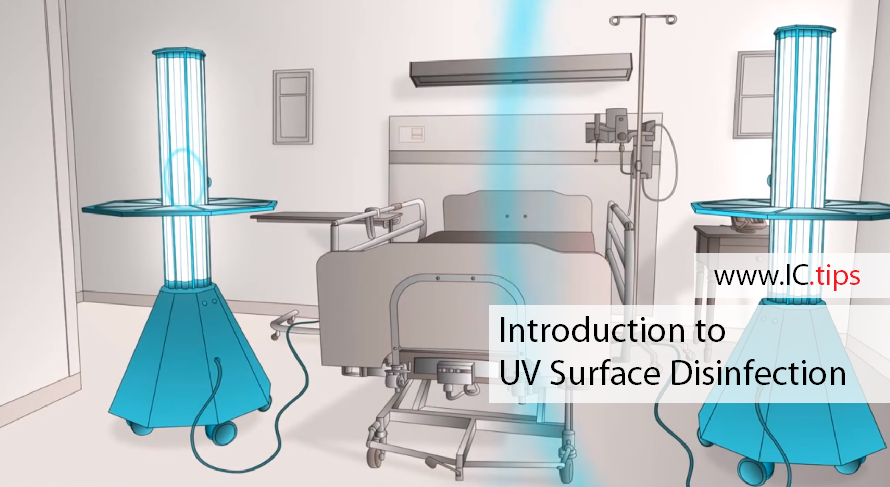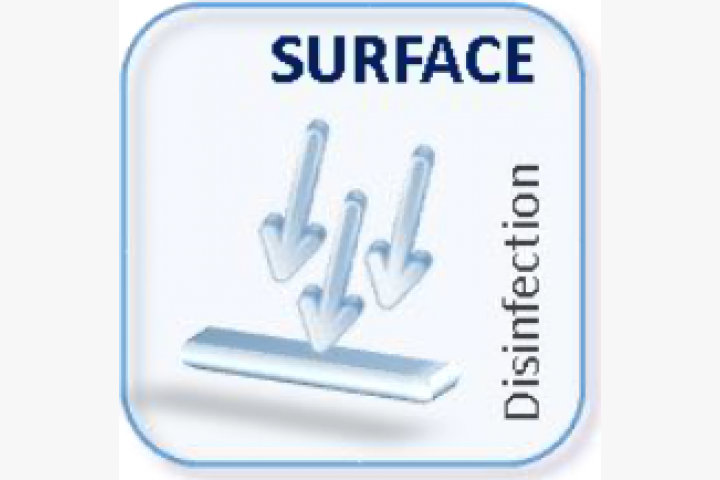UV Surface Disinfection Made Simple: Carrying Out Finest Practices for Optimum Results
UV Surface Disinfection Made Simple: Carrying Out Finest Practices for Optimum Results
Blog Article
Harnessing the Prospective of UV Disinfection: Shielding Health and Health
As the world faces the recurring pandemic and the continuous risk of contagious conditions, the importance of keeping health and wellness and hygiene has never ever been more noticeable. In this context, taking advantage of the possibility of UV disinfection becomes an appealing service. UV disinfection, a technology extensively used in numerous industries, has verified effective in removing harmful virus. There is a lot even more to discover behind the scientific research of UV disinfection and its applications. From comprehending the devices at play to executing this technology in our every day lives, this discussion aims to lose light on the capacity of UV sanitation and its role in guarding our health and wellness and health.
Understanding UV Disinfection
UV sanitation is a very effective and commonly used technique for eliminating harmful pathogens and making certain wellness and health. This technique uses ultraviolet (UV) light to suspend microbes by damaging their DNA and stopping them from recreating. UV sanitation is specifically efficient against germs, viruses, and various other microbes that can trigger infections and conditions.
The principle behind UV disinfection is basic yet effective. When UV light is given off at a certain wavelength, it passes through the microbe's cell wall and disrupts its hereditary product. This procedure, referred to as photodissociation, causes the formation of thymine dimers, which stop the microbe from duplicating and rendering it harmless. UV sanitation can be applied in various settings, including water treatment plants, health care centers, food handling sectors, and air purification systems.
One of the benefits of UV sanitation is its capacity to effectively and efficiently remove a variety of virus without the requirement for additives or chemicals. Unlike other sanitation methods, such as chlorine or ozone, UV disinfection does not introduce harmful byproducts or chemical residues into the environment. Furthermore, UV disinfection is a non-contact process, which means that it does not require physical call with the microbes, lessening the danger of cross-contamination.

The Scientific Research Behind UV Sanitation
The efficiency of UV sanitation depends on its ability to interrupt the hereditary material of microorganisms, making them incapable to replicate and thus eliminating their damaging possibility. UV, or ultraviolet, radiation is a type of electro-magnetic radiation with wavelengths much shorter than noticeable light. It is categorized into 3 kinds: UV-B, uv-a, and uv-c. UV-C radiation, especially, has the shortest wavelength and the highest power. This high-energy UV-C radiation is most efficient in sanitation applications since it can pass through the cell walls of microbes and harm their DNA or RNA.
When microbes are subjected to UV-C radiation, the power is absorbed by their genetic product, creating bonds to damage and forming chain reactions that interrupt their capacity to replicate. This stops the microbes from spreading and duplicating infection. UV sanitation is especially reliable against infections, bacteria, and fungis, including usual virus such as Escherichia coli, Salmonella, and Influenza.
The scientific research behind UV sanitation is supported by substantial research study and research studies. It has actually been revealed that exposure to an adequate dose of UV-C radiation can achieve a high degree of sanitation, frequently surpassing 99.9% effectiveness in killing microorganisms. It is vital to note that the efficiency of UV disinfection depends on different elements, consisting of the strength of UV-C radiation, direct exposure time, distance from the UV source, and the susceptibility of the bacterium to UV radiation (uv surface disinfection).
Applications of UV Disinfection
Offered the considerable research and effectiveness of UV sanitation in disrupting the hereditary product of microbes, it is very important to discover the different functional applications of this innovation. UV disinfection has actually shown to be an important device in a large range of sectors where preserving a tidy and secure environment is important.
One major application of UV sanitation remains in healthcare settings. UV light can be made use of to decontaminate surfaces, equipment, and even the air in medical facilities and medical centers. This aids to lower the threat click for source of healthcare-associated infections and guarantees a safer setting for patients and medical care employees.
An additional essential application remains in the food and beverage industry. UV sanitation is made use of to deal with water and eliminate hazardous pathogens, such as E. coli and Salmonella, from the production process. uv surface disinfection. This ensures the safety and quality of the products we take in
UV disinfection is also extensively used in water therapy plants and wastewater therapy centers. It is an efficient method for damaging damaging bacteria, viruses, and parasites that can be present in water sources. This aids to give safe and clean drinking water to areas and protect the setting from pollution.
In addition, UV sanitation is employed in the pharmaceutical sector to disinfect equipment and keep the honesty of items. It is also utilized in laboratories and study facilities to stop contamination and guarantee accurate results.
Benefits of UV Sanitation Innovation
One remarkable benefit of utilizing UV sanitation modern technology is its capacity to effectively eradicate microbes without the use of harsh chemicals. This is specifically beneficial in various settings, such as healthcare facilities, water treatment plants, and food handling markets, where the presence of unsafe virus positions a substantial danger to public health and wellness and safety and security.
Unlike traditional disinfection techniques that rely upon chemicals like chlorine or ozone, UV disinfection innovation utilizes ultraviolet light to target and destroy the DNA of microbes, effectively neutralizing their capability to reproduce and cause infections. This process not only eliminates the demand for potentially hazardous chemicals however additionally lowers the danger of chemical residue or byproducts remaining in the treated environment.

Furthermore, UV disinfection modern technology is ecologically pleasant. As it does not rely on the usage of chemicals, it eliminates why not find out more the requirement for their manufacturing, transportation, and disposal, lowering the overall carbon impact connected with sanitation procedures. In addition, UV disinfection systems have a longer life expectancy contrasted to chemical-based techniques, causing less regular replacement and additional reducing waste.
Applying UV Sanitation in Every Day Life
To successfully execute UV disinfection in every day life, individuals and organizations can integrate portable UV sterilizing gadgets right into their health regimens and cleaning up methods. These devices are created to produce ultraviolet light, which has been shown to eliminate or inactivate a wide variety of bacteria, consisting of infections, fungi, and germs. By using mobile UV disinfecting gadgets, people can sanitize generally touched things and surfaces, such as mobile phone, laptop computers, keys, and doorknobs, decreasing the risk of spreading germs and infections.
Along with including mobile UV helpful site sterilizing devices, it is very important to comply with proper guidelines and suggestions for effective UV sanitation. This consists of making certain that the tool is utilized appropriately and for the advised duration to achieve optimum disinfection results. It is also important to prioritize precaution, such as putting on safety glasses and staying clear of direct exposure of the UV light to the skin.

Moreover, organizations can execute UV disinfection modern technology in various setups to improve hygiene techniques. Health centers and medical care centers can utilize UV sanitation robotics to sterilize patient rooms, operating theaters, and various other high-touch locations. Food processing markets can incorporate UV sanitation systems into their production lines to improve food safety and prevent contamination.
Conclusion
Finally, UV sanitation technology holds wonderful potential in safeguarding health and hygiene. By utilizing the power of ultraviolet light, it efficiently gets rid of hazardous bacteria and reduces the danger of infections. This technology can be used in various settings, such as hospitals, water therapy centers, and public areas, supplying a effective and secure technique of disinfection. With its numerous advantages, UV sanitation is a valuable tool for maintaining a healthy and balanced and tidy setting.
Unlike other disinfection methods, such as chlorine or ozone, UV sanitation does not introduce dangerous spin-offs or chemical residues into the atmosphere. It is crucial to note that the performance of UV sanitation depends on numerous aspects, including the strength of UV-C radiation, exposure time, range from the UV resource, and the sensitivity of the bacterium to UV radiation.
One more advantage of UV sanitation technology is its capacity to give continuous and rapid disinfection. Unlike guidebook cleaning methods, which can be time-consuming and need considerable labor, UV sanitation systems can be automated and operate continuously, ensuring consistent sanitation without human treatment.To effectively execute UV sanitation in everyday life, individuals and organizations can include portable UV disinfecting tools into their hygiene regimens and cleaning methods.
Report this page